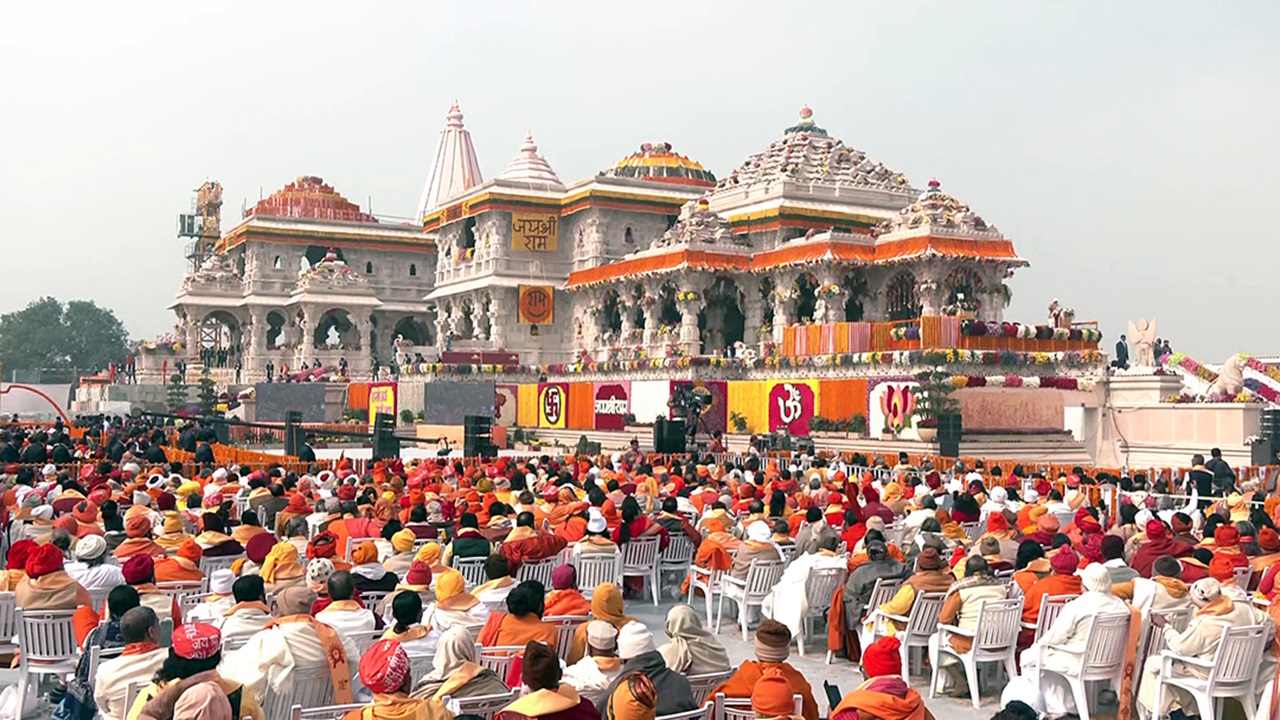Prime Minister Narendra Modi today performed the much awaited Pran Prathishta of the Ram Lalla idol at the Shri Ram Mandir in Ayodhya, in the presence of hundreds of celebrities, saints and other known dignitaries from across India. Although the temple construction is not yet finished, the design of the grand Ram Temple has garnered a lot of praise from across the world. While the design is based on the traditional Indian temples, the core is scientific.
Also read: All About The Magnificent Ayodhya Ram Mandir – Design, History
Ram Mandir: Scientific Design
As per Union Minister of State (Independent Charge) Science & Technology; MoS PMO, Personnel, Public Grievances, Pensions, Atomic Energy and Space, Dr Jitendra Singh, the construction of the Ram Mandir has been technically assisted by atleast four leading National Institutes of CSIR (Council of Scientific & Industrial Research) and DST (Department of Science & Technology) under Ministry of Science & Technology.
In addition to these institutes, certain inputs from other institutions like IITs as well as ISRO (Indian Space Research Organisation) were taken. The four institutes which made a significant contribution include CSIR -Central Building Research Institute (CBRI) Roorkee; CSIR – National Geophysical Research Institute (NGRI) Hyderabad; DST – Indian Institute of Astrophysics (IIA) Bengaluru and CSIR-Institute of Himalayan Bioresource Technology (IHBT) Palampur (HP).
CSIR-CBRI Roorkee has majorly contributed towards Ram Temple construction; CSIR-NGRI Hyderabad gave significant inputs on foundation design and seismic safety; DST-IIA Bengaluru provided technical support on Sun’s path for Surya Tilak and CSIR-IHBT Palampur has made tulips bloom for the divine Ram Mandir Pran Pratishtha ceremony in Ayodhya.
Dr Jitendra Singh said, besides CBRI, the CSIR-NGRI Hyderabad also gave significant inputs on foundation design and seismic/ earthquake safety. Few IITs were also part of expert advisory committee and even Space technologies from ISRO have been used in the construction of the grandiose structure, he said.

Ram Mandir: Earthquake Resistant Design
The main temple building, which is 360 ft long, 235 ft wide and 161 ft high, is made of sandstone quarried from Bansi Pahadpur, Rajasthan. Cement or iron and steel is not used anywhere in its construction. The Structural Design of the 3-storey temple is designed earthquake resilient and can withstand strong tremors of magnitude 8 on the Richter scale for as long as 2,500 years.
A unique feature of the Ram Temple is the Surya Tilak mechanism, designed in such a way that the Sun rays will fall on the forehead of Lord Ram’s Idol at 12 noon on Sriram Navami day every year for about 6 minutes. The core of the temple is covered in the pristine white elegance of Rajasthan’s Makrana marble.
Further, Karnataka’s Charmouthi sandstone is used in the carvings of deities, and pink sandstone from Rajasthan’s Bansi Paharpur has been utilized in entrance gate’s imposing figures. The Black stone used for Lord Ram’s idol originates from Karnataka. Similarly, Brassware hails from Uttar Pradesh, polished teakwood arrives from Maharashtra.